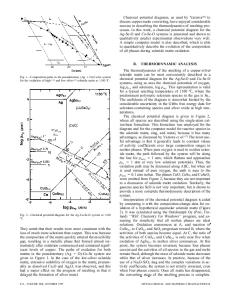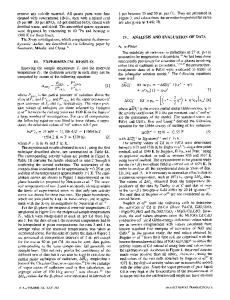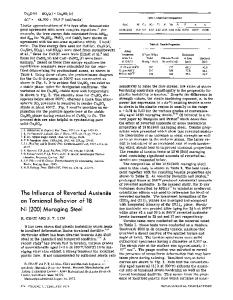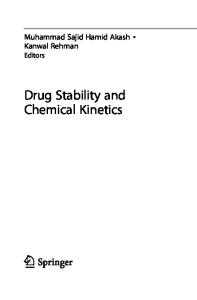Studies on the thermodynamic stability of silver selenide
- PDF / 189,565 Bytes
- 4 Pages / 612 x 792 pts (letter) Page_size
- 78 Downloads / 352 Views
The authors acknowledge the United States Bureau of Mines for the financial support of this investigation through its Generic Center for Pyrometallurgy. Their assistance is appreciated.
Fig. 5—Results of X-ray analysis of ilmenite reacted in a hydrogen plasma for 11 min (plasma conditions: 0.8 kW and 2100 Pa).
FeO z TiO2 (s) 1 2H • 5 Fe (s) 1 TiO2 (s) 1 H2O, K1123
K
5 4.1 z 1013
[3]
Particulate in a plasma becomes negatively charged. As a result of the charge buildup, the energy of electrons striking the particulate surface is decreased due to Coulombic forces. Thus, the water vapor molecule in Reaction [3] does not undergo disassociation until it passes from the particulate through the Debye sheath into the plasma, where that molecule can encounter energetic-free electrons.[2] The monatomic hydrogen produced in the plasma, upon passing across the sheath and striking the particulate surface, reacts immediately, as the single electron in the s-orbital can rapidly adjust to minimize energy and Coulombic repulsion created when the electron encounters another electron in the p-orbital of an oxygen atom in the ilmenite. Steric effects help limit the extent of the back reaction.[2] The large equilibrium constant for Reaction [3] indicates that the theoretical limit for hydrogen utilization approaches 100 pct. Data from the present work (Figure 4) indicate that the fraction of hydrogen reacted using the plasma was as much as 420 pct greater than that predicted for Reaction [1] (as represented by the solid line in Figure 4) at 1123 K. While that degree of reaction does not match that predicted with the equilibrium constant for Reaction [3], the experimental results reveal that the plasma does enhance the extent of reaction. The extent of hydrogen utilization with the plasma is probably limited by recombination of monatomic hydrogen on iron particles (and other metal surfaces in the reactor) and design of the experimental apparatus. With a fluidized bed reactor or a spouted bed reactor, the utilization of the hydrogen with a plasma is expected to improve. X-ray analysis of the surface material that was contacted by the plasma indicated that iron, TiO2, and ilmenite were METALLURGICAL AND MATERIALS TRANSACTIONS B
REFERENCES 1. G.S. Oehrlien: in Handbook of Plasma Processing Technology: Fundamentals, Etching, Deposition, and Surface Interactions, S.M. Rossnagal, J.J. Cuomo, and W.D. Westwood, eds., Noyes, NJ, 1990, pp. 30-37. 2. D.E. Bullard: Ph.D. Dissertation, University of Arizona, Tucson, AZ, 1993. 3. HSC Chemistry for Windows (Computerized), Ver. 2.0, A. Roine, Outkumpu Research Oy, Pori, Finland, 1994. 4. C.H. Shomate, B.F. Naylor, and F.S. Boericke: U.S. Bureau of Mines RI 3864, Washington, DC, 1946.
Studies on the Thermodynamic Stability of Silver Selenide A. NASAR and M. SHAMSUDDIN Silver selenide (Ag2Se), the only compound in the system Ag-Se, is stable in two forms, a and b, with a transition temperature of 406 K.[1] The thermodynamic properties of Ag2Se have been determined by a number of investigators usi
Data Loading...











